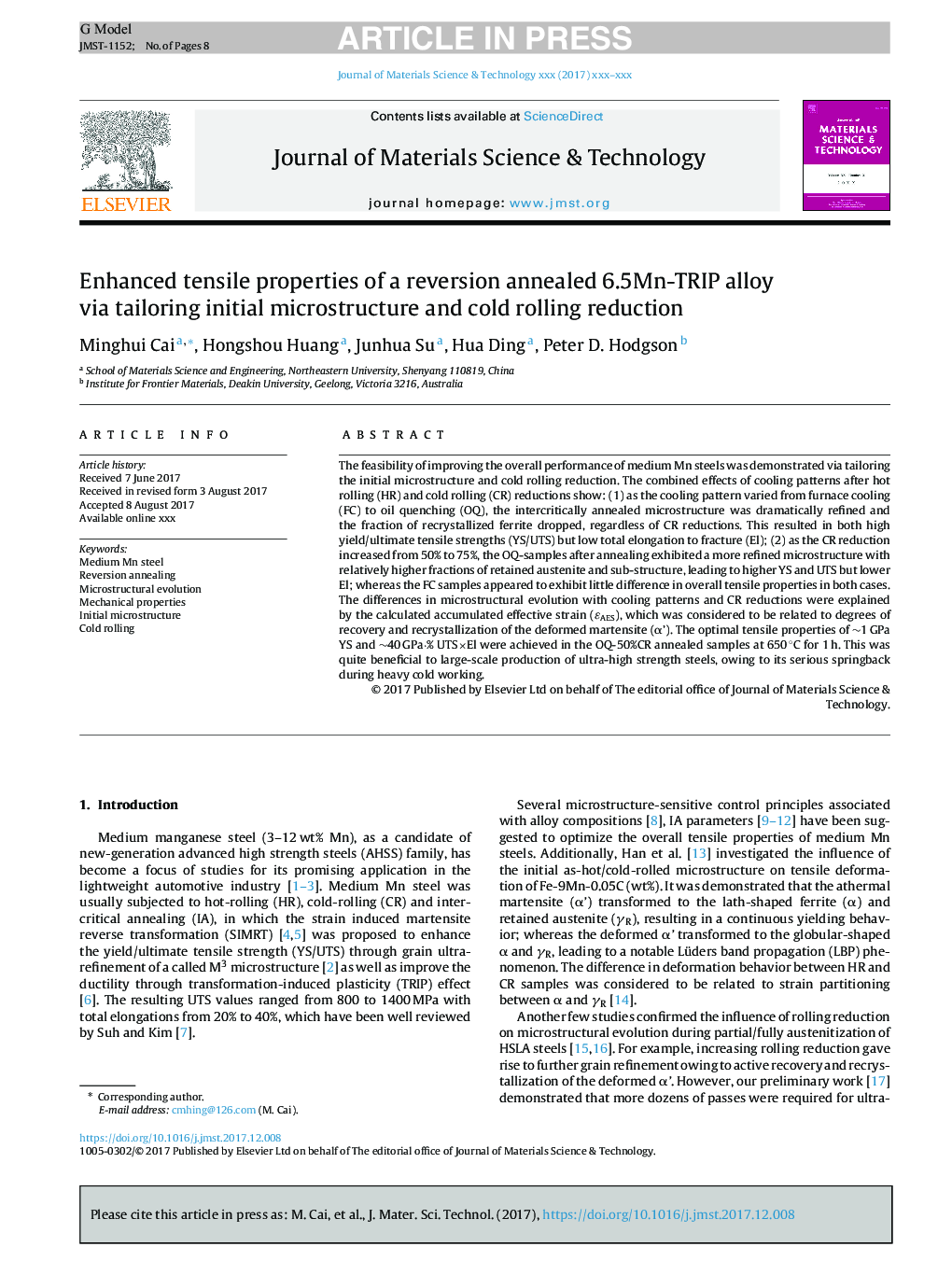| Article ID | Journal | Published Year | Pages | File Type |
|---|---|---|---|---|
| 7951936 | Journal of Materials Science & Technology | 2018 | 8 Pages |
Abstract
The feasibility of improving the overall performance of medium Mn steels was demonstrated via tailoring the initial microstructure and cold rolling reduction. The combined effects of cooling patterns after hot rolling (HR) and cold rolling (CR) reductions show: (1) as the cooling pattern varied from furnace cooling (FC) to oil quenching (OQ), the intercritically annealed microstructure was dramatically refined and the fraction of recrystallized ferrite dropped, regardless of CR reductions. This resulted in both high yield/ultimate tensile strengths (YS/UTS) but low total elongation to fracture (El); (2) as the CR reduction increased from 50% to 75%, the OQ-samples after annealing exhibited a more refined microstructure with relatively higher fractions of retained austenite and sub-structure, leading to higher YS and UTS but lower El; whereas the FC samples appeared to exhibit little difference in overall tensile properties in both cases. The differences in microstructural evolution with cooling patterns and CR reductions were explained by the calculated accumulated effective strain (εAES), which was considered to be related to degrees of recovery and recrystallization of the deformed martensite (α'). The optimal tensile properties of â¼1 GPa YS and â¼40 GPa·% UTSÃEl were achieved in the OQ-50%CR annealed samples at 650 °C for 1 h. This was quite beneficial to large-scale production of ultra-high strength steels, owing to its serious springback during heavy cold working.
Keywords
Related Topics
Physical Sciences and Engineering
Materials Science
Materials Chemistry
Authors
Minghui Cai, Hongshou Huang, Junhua Su, Hua Ding, Peter D. Hodgson,
